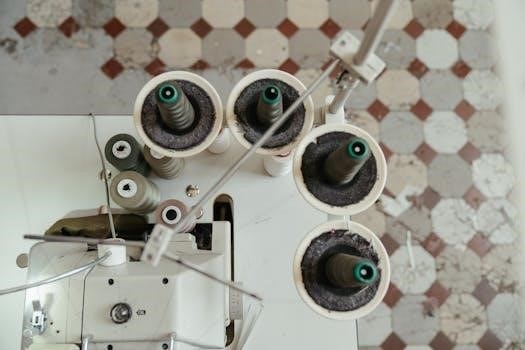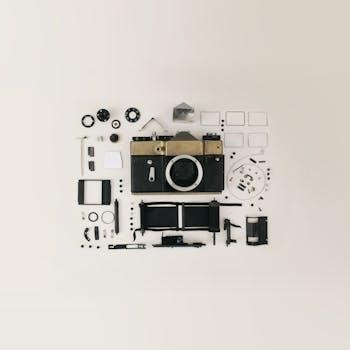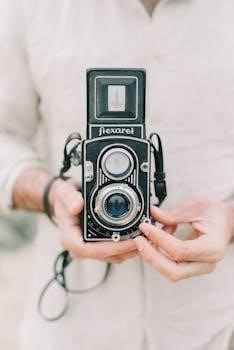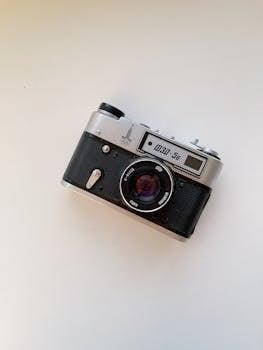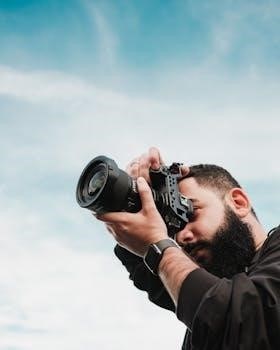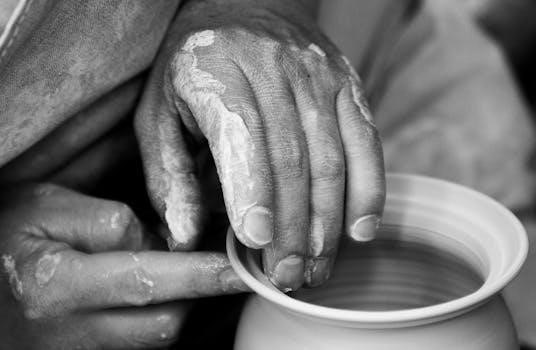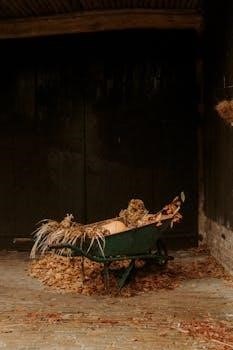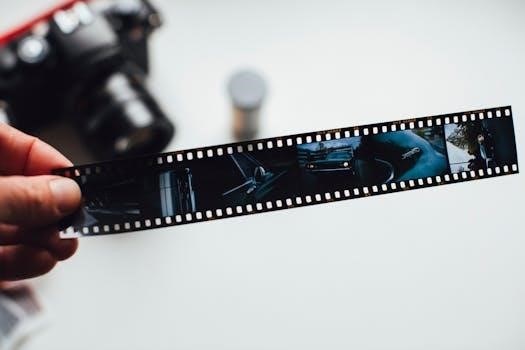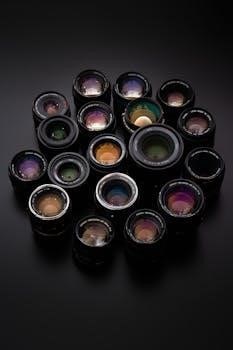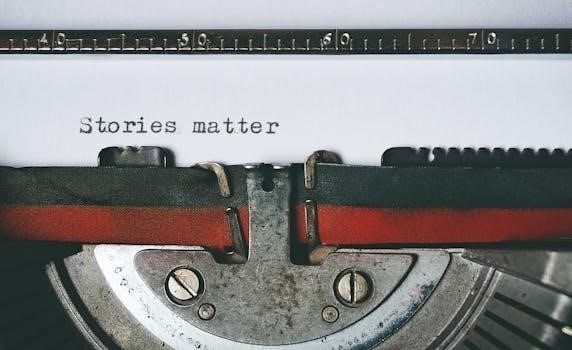Brother Sewing Machine Tutorial⁚ A Beginner’s Guide
Are you new to sewing and eager to start your creative journey with a Brother sewing machine? This tutorial offers a comprehensive guide to help beginners understand their machine, master basic operations, and troubleshoot common problems․ Learn how to set up, thread, and maintain your Brother sewing machine with ease․
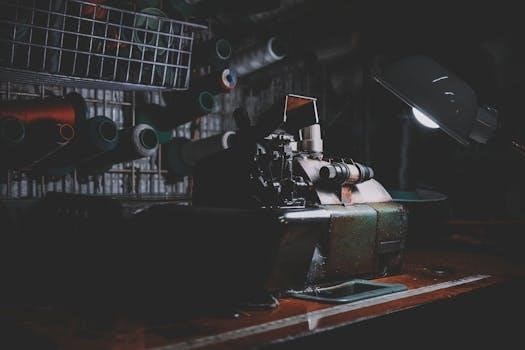
Understanding Your Brother Sewing Machine
Before diving into sewing projects, it’s essential to familiarize yourself with the anatomy of your Brother sewing machine․ Start by carefully reading the manual, as it provides specific details about your machine’s features and functions․ Locate the power switch, bobbin winder, thread guides, tension dial, stitch selector, and presser foot lever․ Understanding the purpose of each part will make sewing much smoother․
Pay close attention to the illustrations and diagrams in the manual, as they offer visual guidance for threading the machine and winding the bobbin․ Many Brother sewing machines have on-machine illustrations to further assist you․ Explore the different stitch options available on your machine, including utility stitches like straight stitch and zigzag stitch, as well as decorative stitches․
Take the time to practice using the foot controller, which controls the sewing speed․ Gently press down to start sewing and release pressure to stop․ Experiment with different speeds to find what feels comfortable for you․ By understanding your Brother sewing machine, you’ll be well-prepared to tackle various sewing projects with confidence․
Essential Accessories for Brother Sewing Machines
To enhance your sewing experience with a Brother machine, having the right accessories is crucial․ Invest in high-quality sewing needles suitable for various fabric types, ensuring smooth and even stitches․ Stock up on bobbins compatible with your machine model to avoid interruptions during projects․ A seam ripper is indispensable for correcting mistakes and removing unwanted stitches․
Consider purchasing different presser feet to expand your sewing capabilities․ A zipper foot allows you to sew close to zippers and piping, while a buttonhole foot creates professional-looking buttonholes․ A walking foot improves fabric feeding, especially when working with multiple layers or slippery fabrics․ Don’t forget essential tools like fabric scissors, measuring tape, and marking pencils for accurate cutting and measuring․
Organize your accessories in a sewing box or storage container to keep them readily accessible․ Explore the vast range of Brother sewing accessories available online or at your local sewing store․ By equipping yourself with these essential accessories, you’ll be well-prepared to tackle any sewing project with ease and precision․
Threading the Brother Sewing Machine⁚ A Step-by-Step Guide
Threading your Brother sewing machine correctly is essential for achieving consistent and professional-looking stitches․ Begin by turning off the machine to ensure safety․ Raise the presser foot and position the thread spool on the spool pin, securing it with a spool cap․ Guide the thread through the thread guides, following the numbered diagrams on your machine․
Next, thread the upper thread tension disc, making sure the thread sits snugly within the disc․ Proceed to thread the take-up lever, moving the thread up and down as indicated․ Guide the thread through the lower thread guides before threading the needle from front to back․
Finally, draw the thread through the eye of the needle and pull a few inches of thread through․ Lower the presser foot and use the handwheel to lower the needle, catching the bobbin thread․ Raise the presser foot again and gently pull both threads towards the back of the machine․ You are now ready to start sewing with your perfectly threaded Brother machine․
Winding the Bobbin⁚ Brother Sewing Machine Instructions
Winding the bobbin correctly is a crucial step in preparing your Brother sewing machine for use․ Start by placing your thread spool on the spool pin and securing it with a spool cap․ Locate the bobbin winder spindle, usually on the top of the machine, and place an empty bobbin onto it․ Snap the bobbin into place, ensuring it is securely fitted․
Next, guide the thread from the spool through the bobbin winding tension disc, following the diagram on your machine․ Wind the thread around the bobbin a few times by hand to secure it․ Push the bobbin winder lever to the right to engage the bobbin winding mechanism․ Hold the thread tail and start the machine by pressing the foot pedal gently․
As the bobbin winds, it will automatically stop when full․ Cut the thread, push the bobbin winder lever back to the left, and remove the full bobbin․ Your bobbin is now ready to be inserted into the bobbin case of your Brother sewing machine․
Basic Sewing Operations⁚ Starting and Stopping
Once your Brother sewing machine is threaded and the bobbin is in place, you’re ready to begin sewing! Position your fabric under the presser foot, ensuring the needle is aligned with your desired starting point․ Lower the presser foot to secure the fabric․ To start sewing, gently press down on the foot controller․ The machine will begin stitching, and you can guide the fabric along the seam line․
For a secure start, consider using the reverse stitch function to backstitch a few stitches․ This prevents the seam from unraveling․ Maintain a consistent speed by applying steady pressure to the foot controller․ Guide the fabric smoothly, avoiding pulling or pushing it excessively․
When you reach the end of your seam, stop sewing by releasing the foot controller․ Raise the needle to its highest position by turning the handwheel towards you․ Lift the presser foot and gently pull the fabric away from the machine․ Use the thread cutter, usually located on the side of the machine, to cut the threads․ Secure the end of the seam with a backstitch or by tying a knot․
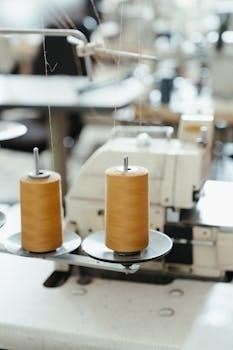
Stitch Selection and Adjustment on Brother Machines
Brother sewing machines offer a variety of stitch options, from basic straight stitches to decorative patterns․ Selecting the right stitch is crucial for achieving the desired look and functionality for your project․ Consult your machine’s manual to understand the available stitch options and their recommended uses․
To select a stitch, use the stitch selection dial or buttons on your machine․ The selected stitch number or icon will be displayed on the machine’s screen or indicator․ Once you’ve chosen a stitch, you can adjust its length and width to customize its appearance․ Use the stitch length and width dials or buttons to make these adjustments․
Experiment with different stitch settings on scrap fabric to see how they affect the final result․ Adjusting the stitch length can impact the seam’s strength and appearance, while adjusting the stitch width can create different decorative effects․ Always test your stitch settings before sewing on your final project to ensure you achieve the desired outcome․

Troubleshooting Common Sewing Problems
Even with a reliable Brother sewing machine, you may encounter occasional problems․ One common issue is thread breakage, which can be caused by incorrect threading, improper tension settings, or using the wrong type of thread for your fabric․ Re-threading the machine and adjusting the tension are often the first steps to resolving this issue․
Another frequent problem is skipped stitches, which can occur if the needle is damaged, not inserted correctly, or if the fabric is too thick for the needle size․ Replacing the needle and ensuring it is properly inserted can help․ Uneven stitches may result from incorrect tension settings or improper fabric feeding․ Adjusting the tension and guiding the fabric smoothly can improve stitch quality․
If your machine is making unusual noises, check for tangled threads or debris in the bobbin area․ Cleaning and oiling the machine regularly can prevent such issues․ If problems persist, consult your machine’s manual or contact Brother customer support for assistance․ Remember, addressing problems promptly can prevent further damage and ensure smooth sewing․
Maintenance and Care for Your Brother Sewing Machine
Proper maintenance and care are essential to prolong the life of your Brother sewing machine and ensure optimal performance․ Regular cleaning is crucial․ Start by unplugging the machine and using a soft brush to remove lint and dust from the bobbin area, feed dogs, and other accessible parts․ This prevents buildup that can interfere with the machine’s mechanics․
Oiling your sewing machine is another important step․ Consult your machine’s manual for specific instructions on which parts to oil and the type of oil to use․ Typically, a few drops of sewing machine oil applied to the designated points will keep the machine running smoothly․ Avoid over-oiling, as this can attract more dust and lint․
Additionally, store your sewing machine in a clean, dry place, preferably covered, to protect it from dust and moisture․ Regularly inspect the needle for damage and replace it as needed․ By following these maintenance tips, you can keep your Brother sewing machine in excellent condition for years to come, ensuring enjoyable and trouble-free sewing experiences․
Exploring Different Presser Feet and Their Uses
Brother sewing machines come with a variety of presser feet, each designed for specific sewing tasks․ Understanding these feet and their uses can greatly enhance your sewing capabilities․ The standard presser foot is ideal for general sewing and basic stitches․ A zipper foot allows you to sew close to zippers and piping cords, ensuring neat and professional results․ Its non-stick coating helps it glide over oilcloth and vinyl coated fabrics․
For buttonholes, the buttonhole foot creates perfectly sized and consistent buttonholes․ The walking foot, also known as a dynamic walking foot, improves fabric feeding, making it perfect for quilting and sewing multiple layers of fabric․ A narrow hemmer foot creates clean, narrow hems on delicate fabrics, while a blind hem foot allows you to create invisible hems․
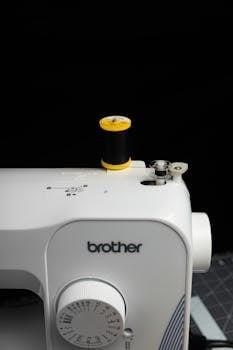
Specialty feet like the fringe foot can add decorative elements to your projects․ Experimenting with different presser feet can open up new creative possibilities and help you achieve professional-looking finishes on all your sewing projects․ Always consult your machine’s manual for guidance on using each foot correctly․
Utilizing Built-in Features⁚ Buttonholes and Decorative Stitches
Brother sewing machines often come equipped with a range of built-in features that can elevate your sewing projects․ Among the most useful are the automatic buttonhole settings and a variety of decorative stitches․ The automatic buttonholer creates perfectly sized and consistent buttonholes with ease, eliminating the need for manual measuring and adjustments․ Many Brother machines offer one-step buttonholers, ensuring virtually perfect buttonholes every time․
Decorative stitches add a unique touch to your creations․ Brother machines offer a variety of decorative stitches, including blind hem, decorative, and quilting stitches․ Experiment with different stitch patterns to enhance your projects․ Some models even allow you to adjust the stitch width and length to customize the look․
By exploring and utilizing these built-in features, you can easily add professional-looking details and creative embellishments to your sewing projects․ Refer to your machine’s manual for detailed instructions on accessing and adjusting these settings to maximize your sewing potential․
